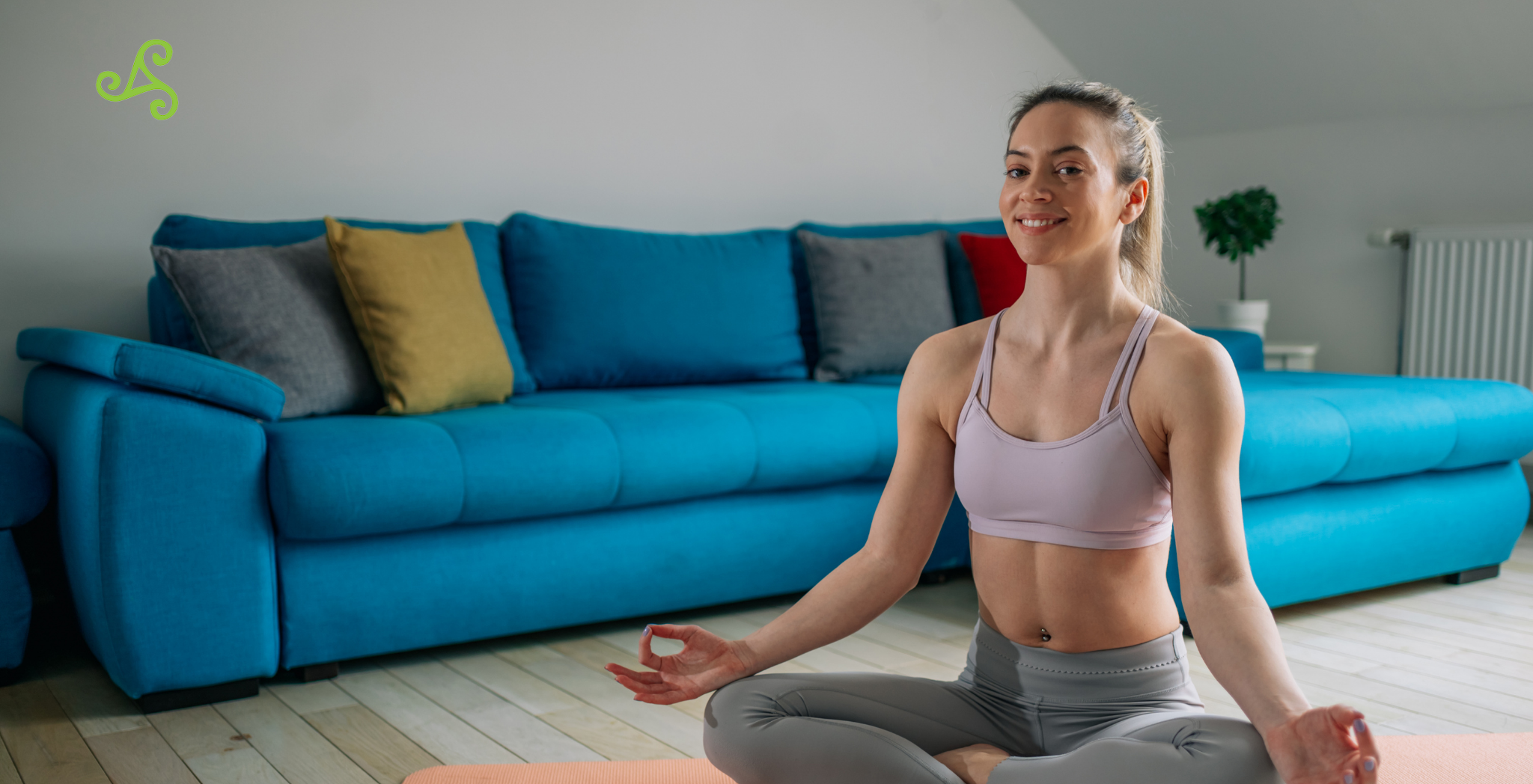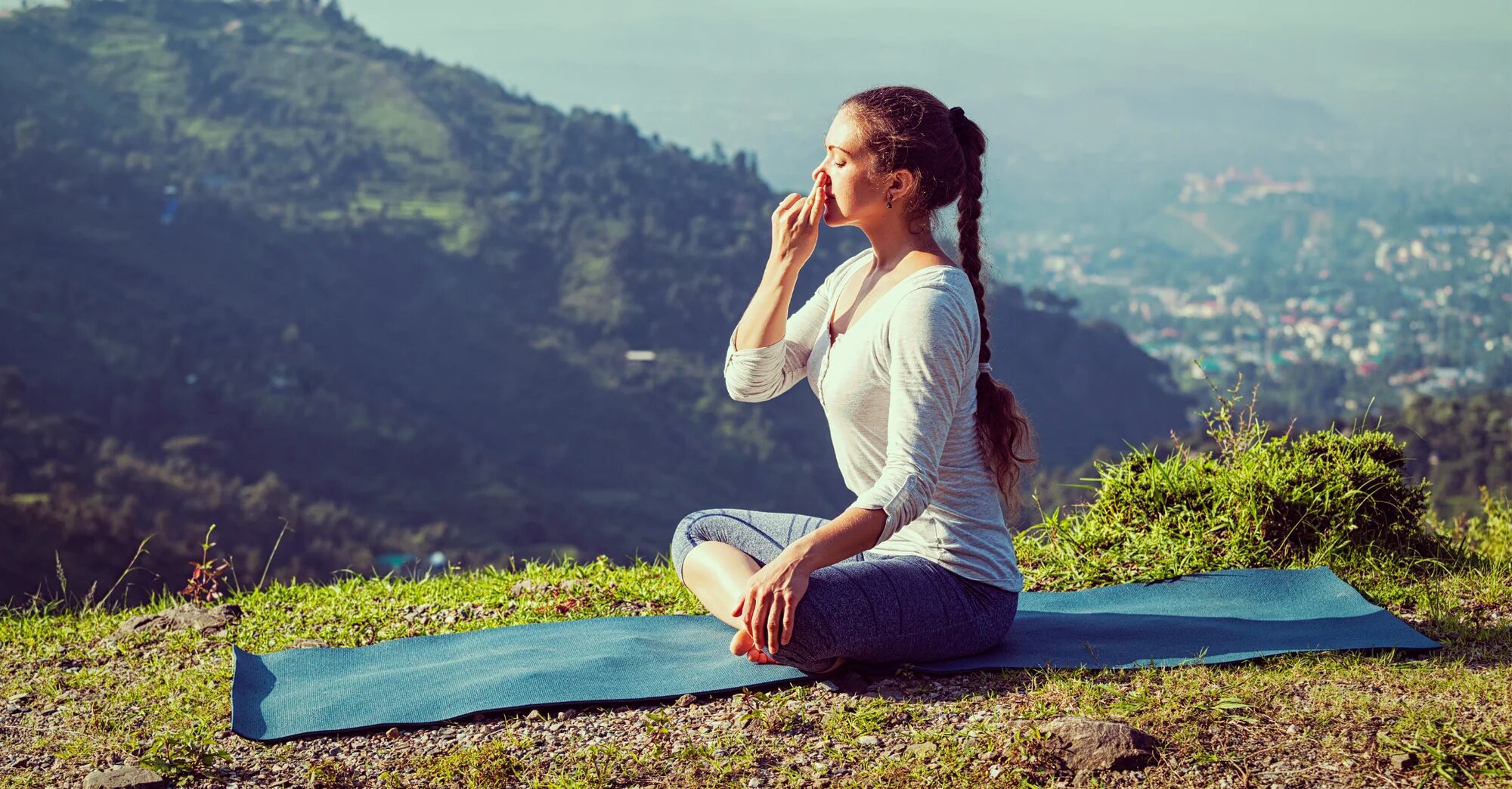A Beginners Guide on How To Do Pranayama
Pranayama is the practice of controlling one's breath. It's a key component of Yoga, a form of exercise that promotes both physical and emotional well-being. "Prana" signifies life energy in Sanskrit, while "Yama" denotes control.
Pranayama is a breathing exercise that comprises of different patterns. You deliberately inhale, expel, and hold your breath in a particular order.
Some yoga masters consider Pranayama to be more vital than asana, even referring to it as the "heart of yoga." You might be asking what it is and how to get started if you're new to it. For additional information, continue reading.
What is Pranayama?
Prana is the life force or breath that keeps the body alive, and Ayama means "to expand or draw out." The two together denote breath extension or control.
Pranayama is an important aspect of the yogic tradition, although it's not always easy to comprehend.
Pranayama is supposed to nurture a high level of physiological health and mental clarity, both of which are critical stages on the journey to self-knowledge and wholesome, authentic life.
Different breathing techniques are used in Pranayama. Here are several examples:
- breathing via alternative nostrils (Nadi shodhana)
- breath of victory (ujjayi)
- Bhramari (bhramari) is the bellows breath of a female honeybee (bhastrika)
- Breathing exercises can be done in a variety of ways. You can practice these while doing yoga positions, for example. You can do them while you're meditating or on your own.
How to Boost Pranayama?
Changing our breathing to impact the quality and amount of air taken into the lungs is the simplest and fastest technique to boost prana in the body. By connecting to the two nadi energy pathways that finish in the nostrils, prana is also absorbed in the nose. Pranayama is a technique for controlling, cultivating, and changing the flow of prana in the body.
A shift in prana will have an impact on the entire body. Firstly, spiritually, then mentally, and last, physically. Advanced Pranayama is used to cleanse the nadis of pollutants and obstructions, finally unblocking the Sushumna nadi and enabling Kundalini prana to circulate through it and upwards through the seven chakras.
Effects of Pranayama on Mind and Emotions
You may suffer a lack of attention and unpleasant emotions such as anxiety, fear, worry, tension, despair, rage, and grief if your prana flow or energy pathways are obstructed or constricted.
The mind becomes peaceful, focused, cheerful, positive, and enthusiastic when your prana or energy pathways are open and flowing freely and effortlessly. As a result, we may influence and regulate our emotional states by using our breathing skillfully and consciously.
How To Do Pranayama Breathing?
The breath is slow and steady, into or out of the nose and down into the belly for most pranayama procedures. Always sit with a relaxed body and a straight spine. Allow any thoughts to fade away while practicing Pranayama by concentrating on the sort of breathing involved.
The exhalation, which should be slow and smooth, is the first thing to master in Pranayama. After mastering exhalation, work on smoothing out the inhalation and making it lengthy and slow. You should not attempt to hold your breath until you have achieved a smooth, gentle inhalation and exhale. During your practice, keep your eyes relaxed or closed.
Types of Pranayama and How To Do Pranayama?
1.How To Do Bhramari Pranayama?
 The Bhramari, or black Indian bee, is the inspiration for this Pranayama. The sound of the exhale is similar to that of a bee humming!
The Bhramari, or black Indian bee, is the inspiration for this Pranayama. The sound of the exhale is similar to that of a bee humming!
It is one of the greatest breathing exercises for stress relief since it relieves the mind of irritation, worry, wrath, and agitation.
Place your fingers on the temple and close your ears with your thumbs. With the other three fingers, close your eyes. Inhale slowly and deeply through your nose, holding for a few seconds. Exhale by generating a buzzing sound while keeping your mouth closed.
2. How To Do Ujjayi Pranayama?

This breathing method, also known as victorious breath or ocean breath, produces a quiet hissing sound during inhaling.
The sound vibrations that are an element of this Pranayama can help heal the thyroid and lessen snoring by sharpening your mind's attention.
Begin by naturally inhaling and exhaling. Bend your head down, obstructing the free flow of air, and inhale as deeply as you can while creating a throaty sound. Hold the position for 2–5 seconds. While exhaling, close your right nostril with your right thumb and breathe out through your left nostril.
3. How To Do Kapalbhati Pranayama?

These vigorous deep breathing exercises are often known as the skull shining breathing technique. This Pranayama improves the function of all abdominal organs, lowers belly fat, helps you lose weight quickly, and regulates your blood sugar levels.
Passive inhalation and active exhalation are used in this breathing technique. So inhale properly and firmly, taking in as much air as you can. During exhalation, try to move your abdominal muscles as near to your backbone as possible.
4. How To Do Bhastrika Pranayama?

The vigorous breathing practice clears your lungs and produces similar to a flame blazing beneath a furnace.
To strengthen your lungs, burn excess fat, increase physical and mental abilities, and clear your windpipe, practice this relaxation technique. Breathe deeply in and expand your stomach by breathing as much air as you can. Exhale forcefully and try to bring your navel in toward your backbone.
5. How To Do Nadi Shodhan Pranayama?

By establishing balance to both hemispheres of the brain, Nadi shodhan pranayama calms and centers the mind. Attempt nine rounds of nadi shodhan pranayama (alternate nostril breathing), then a 10-minute meditation.
6. How To Do Dirga Pranayama?

Dirga Pranayama, also known as the Three-Part Breath, is generally the first breathing method taught to novice practitioners. It is frequently used at the start of a yoga practice to settle in and prepare oneself for practice and meditation by bringing awareness to the current moment and calming the mind.
This technique is particularly useful in everyday life since it achieves a grounded and calm state of consciousness without the use of any special sound or posture.
Benefits of Pranayama
Breathing exercises, when done on a daily basis, can drastically improve one's quality of life.
- Increases the quantity and quality of prana, leading to an increase in our energy levels.
- Clears clogged nadis and chakras, allowing your aura to expand and your spirit to soar.
- Enhances one's energy, enthusiasm, calmness, and positivity. Such a mindset aids us in making better judgments, maintaining mental strength in the face of adversity, and feeling happy.
- Harmonises the body, mind, and soul, resulting in physical, mental, and spiritual strength.
- It gives the intellect clarity and good body health.
Prescriptions for Pranayama
As you can see, there are many different types of pranayama techniques, and they vary according to the discipline in which they are taught. Integral Yoga (connecting movement with meditation), Kripalu Yoga (fostering sensitivity and awareness), Ashtanga Yoga (unifying action, breath, and attention), Iyengar Yoga (evolving precision, power, and subtlety), Viniyoga (creating a personalized practice), and Kundalini Yoga (creating a personalized practice) are six of these traditions (combining mudra, mantra, and breath).
Cautions for Pranayama
Consult your doctor before beginning Pranayama if you have any breathing or respiratory problems.
- You should not hold your breath if you have asthma or high blood pressure.
- In the summer, or if you have a health problem that is increased by heat, avoid Kapalabhati, Bhastrika, and Surya Bhedana Pranayama.
- In the winter, or if you have a health issue that is accentuated by cold, avoid Sit Cari, Shitali, and Chandra Bhedana Pranayama.
- Breath of Fire and Bhastrika pranayama should be avoided if you are pregnant, have a hernia, or have just had abdominal surgery.
- Stop training and rest if you feel dizzy, queasy, or lightheaded.
- It's ideal to study Pranayama from a qualified yoga instructor who can give you personalized training and suggestions.
Let It Out — Inhale, Exhale, Relax
Pranayama exercises can help the mind and body in a variety of ways and on a variety of levels, including physical, emotional, cerebral, and spiritual. Remember to go gently and build on your previous experience to improve your breath control.
Before beginning a breathing exercise, always seek advice from a trainer on proper technique, and stop if you feel faint or dizzy. With practice, you'll be able to direct your breath, allowing your practice to be guided by your breath.

Comments
Post a Comment